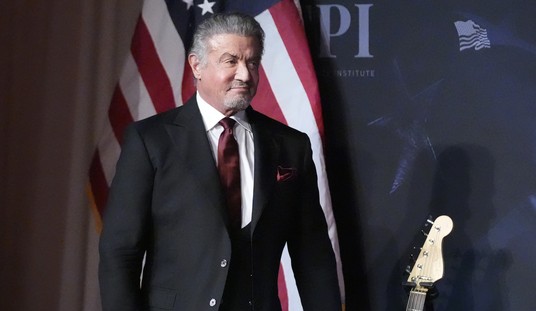In addition to funding issues, perhaps reality itself will eventually make a bold return to academic life in the wake of what Glenn Reynolds has dubbed The Higher Education Bubble.* In the meantime, reality will continue to have a tough go of it on campus. In the Chronicle of Higher Education this week, Christian Smith reports on “An Academic Auto-da-Fé”:
Whoever said inquisitions and witch hunts were things of the past? A big one is going on now. The sociologist Mark Regnerus, at the University of Texas at Austin, is being smeared in the media and subjected to an inquiry by his university over allegations of scientific misconduct.
Regnerus’s offense? His article in the July 2012 issue of Social Science Research reported that adult children of parents who had same-sex romantic relationships, including same-sex couples as parents, have more emotional and social problems than do adult children of heterosexual parents with intact marriages. That’s it. Regnerus published ideologically unpopular research results on the contentious matter of same-sex relationships. And now he is being made to pay.
In today’s political climate, and particularly in the discipline of sociology—dominated as it is by a progressive orthodoxy—what Regnerus did is unacceptable. It makes him a heretic, a traitor—and so he must be thrown under the bus.
Back in 2006, quoting from Harvard University’s Robert Putnam, whom they described as “one of the world’s most influential political scientists,” the Financial Times reported, “Study paints bleak picture of ethnic diversity.” Jonah Golberg explored the topic in his recent book The Tyranny of Cliches:
Robert Putnam, a liberal sociologist at Harvard, famously (infamously, for some) found that as communities become more ethnically diverse they in fact become socially frayed. In a survey that included interviews with over thirty thousand people, Putnam found that as a community becomes more ethnically and socially varied, social trust plummets. People tend to “hunker down,” in Putnam’s words banding together with a shrunken and shrinking group of friends or alone in front of the TV. Trust in political leaders, the political process, and even voting decline precipitously. Volunteerism, from charitable giving to carpooling, deteriorates. Political activism increases as people look to government to solve problems that once might have been solved by a simple conversation across a coffee table or a shared fence between neighbors.
Note: Putnam did not find that diversity fuels racism; the vast bulk of the people interviewed for the study were not bigots. What he found was that diversity promotes alienation, disengagement, and social isolation. This all runs counter to a host of prevailing clichés and pieties (see Chapter 23, Understanding).
Tellingly, in Putnam’s study and in others, Los Angeles ranks at the bottom of the list of communities in terms of social strength. Residents, not to mention political leaders, spout a lot of “happy talk” (to borrow a phrase from researchers of a similar study) about diversity even as diversity fuels a pervasive unhappiness with the health of the community.
In his Bleat today, James Lileks writes:
On an unrelated note, a writer at Frisky talks about the men who saved their dates from the Aurora Madmen, and gets prickly about the idea that there’s something gender specific about the good press they’re getting.
I can respect and be touched by these men’s sacrifices. But I’m also wary of some byproducts of the heroism myth, the idea that a few good men will have courage under fire and put “women and children first.” The Post crowed over these men’s “old-fashioned chivalry,” which are funny words to use, when you get right down to it. Why does masculinity have to have anything to do with heroic behavior? Their sacrifice was noble, sure. But
My old friend, the fulcrum of the but. Just about anything written after the words “Their sacrifice was noble, sure. But” is something I can probably live without.
No problem there for the hypersensitive Frisky folks, as the contrasting examples Mark Steyn noted last year highlight. We can all jump into them — as the Pythons would say, women, children, red Indians, spacemen and a sort of idealized version of the Complete Renaissance Man first — right after the page break.
As Steyn wrote in After America, James Cameron’s class warfare-inspired revisionism notwithstanding, the men on the Titanic a century ago in 1912 “had barely an hour to kiss their wives goodbye, watch them clamber into the lifeboats, and sail off without them. The social norm of ‘women and children first’ held up under pressure.” Flash-forward to the present day:
Today, in what Harvey Mansfield calls our “gender-neutral society,” there are no social norms. Eight decades after the Titanic, a German-built ferry en route from Estonia to Sweden sank in the Baltic Sea. Of the 1,051 passengers, only 139 lived to tell the tale. But the distribution of the survivors was very different from that of the Titanic. Women and children first? No female under fifteen or over sixty-five made it. Only 5 percent of all women passengers lived. The bulk of the survivors were young men. Forty-three percent of men aged 20 to 24 made it.
No two ship disasters are the same, but the testimony from the MV Estonia provides a snapshot of our new world: according to the Finnish Accident Investigation Board’s official report, several survivors reported that “everyone was only looking out for himself.” According to a Swedish passenger, Kent Harstedt, “A woman had broken her legs and begged others to give her a life jacket, but it was the law of the jungle.” “Some old people had already given up hope and were just sitting there crying,” said Andrus Maidre, a 19-year-old Estonian. “I stepped over children who were wailing and holding onto the railing.”
You “stepped over” children en route to making your own escape? There wasn’t a lot of that on the Titanic. “There is no law that says women and children first,” Roger Kohen of the International Maritime Organization told Time magazine. “That is something from the age of chivalry.”
If, by “the age of chivalry,” you mean the early twentieth century.
Only a few decades later, unreality began to assert itself. In 2004, UCLA reported, “FDR’s policies prolonged Depression by 7 years, UCLA economists calculate.” That didn’t stop liberal politicians calling for precisely those policies in May of 2008, even before the economy tanked that fall (a confluence of events that included liberal energy and housing policies), which is why even Paul Krugman is forced to praise the economic benefits of World War II to justify Keynesianism. (And even that assumption is likely unwarranted, some less epistemically closed economists argue.)
Only through repeated election losses have liberals begun to back off from their 1970s through 1990s efforts at gun control. Environmentalism began in the early 1970s as an attempt to create a Soviet-style false consciousness among the middle class, only to collapse into Al Gore’s world of unhealthy twisty bulbs and Obama’s failed venture socialism.
And decades after disastrous experimentation with free love, as Stacy McCain recently quipped, “Young folks have discovered a kinky new sexual phenomenon: If a man places his penis inside a woman’s vagina, she can have a baby.”
In Roger Kimball’s new book The Fortunes of Permanence, he quotes Jean-François Revel (1924-2006), French journalist and philosopher:
The history of philosophy can be divided into two different periods. During the first, philosophers sought the truth; during the second, they fought against it.
In May, even the Washington Post admitted, “20 years later, it turns out Dan Quayle was right about Murphy Brown and unmarried moms.”
Is that timeline typical? In any case, I wonder if we can estimate how long it typically takes after a new left-wing meme takes hold before reality reasserts itself.
Related: Michael Graham on Boston Mayor Thomas Menino’s Catch-22 — attack Chick-fil-A on their stance on gay marriage, even while supporting his local multimillion-dollar mega-mosque and imam, who advocates that every infidel must get stoned. “If I had to send an angry, outraged letter to either Chick-Fil-A (we don’t support gay marriage) or the Islamic Society of Boston (we support stoning gay people), I think I’d make a different choice than Mayor Menino did.”
But then, as Michael Walsh writes in his PJ Media column, “When the Fairness & Tolerance crowd drops the mask, it’s never a pretty sight.”
* Though I must say, Glenn’s even newer book sounds particularly tasty…










Join the conversation as a VIP Member